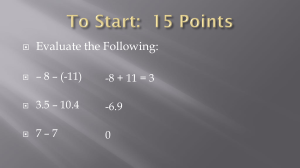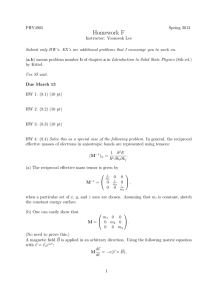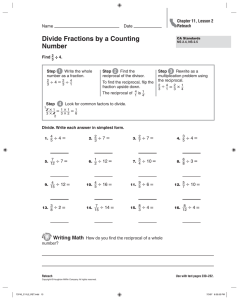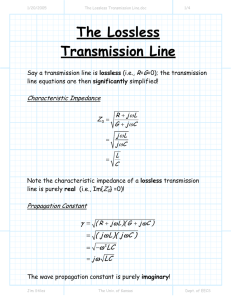Reciprocal and Lossless Devices
advertisement
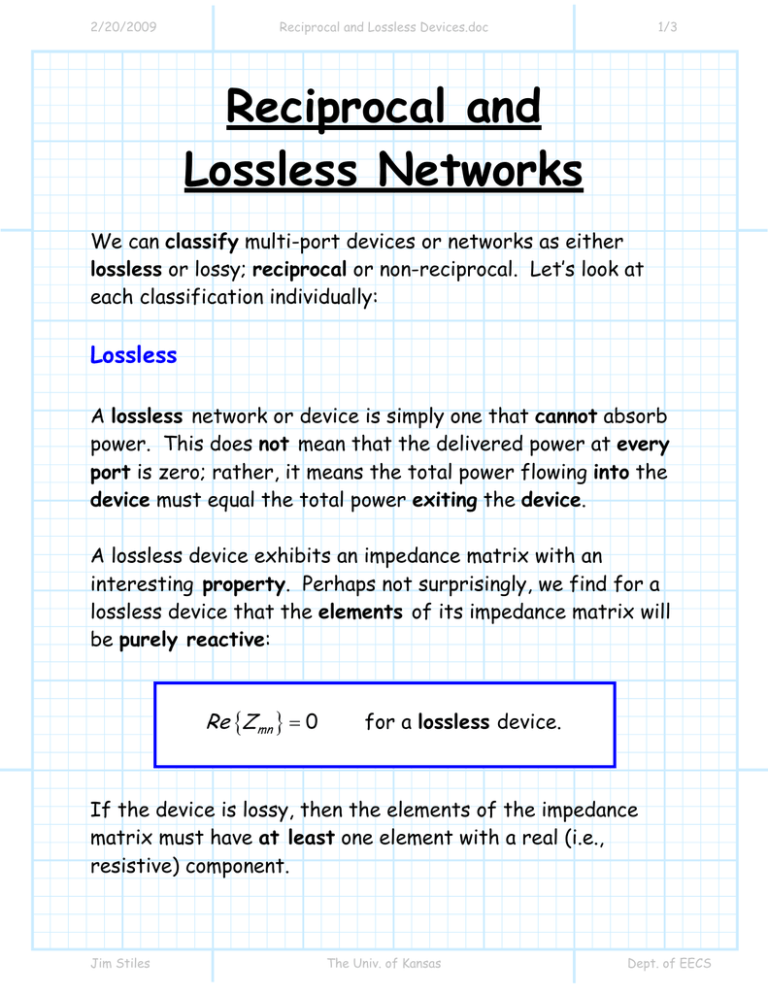
2/20/2009
Reciprocal and Lossless Devices.doc
1/3
Reciprocal and
Lossless Networks
We can classify multi-port devices or networks as either
lossless or lossy; reciprocal or non-reciprocal. Let’s look at
each classification individually:
Lossless
A lossless network or device is simply one that cannot absorb
power. This does not mean that the delivered power at every
port is zero; rather, it means the total power flowing into the
device must equal the total power exiting the device.
A lossless device exhibits an impedance matrix with an
interesting property. Perhaps not surprisingly, we find for a
lossless device that the elements of its impedance matrix will
be purely reactive:
Re {Z mn } = 0
for a lossless device.
If the device is lossy, then the elements of the impedance
matrix must have at least one element with a real (i.e.,
resistive) component.
Jim Stiles
The Univ. of Kansas
Dept. of EECS
2/20/2009
Reciprocal and Lossless Devices.doc
2/3
Moreover, we similarly find that if the elements of an
admittance matrix are all purely imaginary (i.e., Re {Ymn } = 0 ),
then the device is lossless.
Reciprocal
Generally speaking, most passive, linear microwave
components will turn out to be reciprocal—regardless of
whether the designer intended it to be or not!
Reciprocity is basically a “natural” effect of using simple
linear materials such as dielectrics and conductors. It results
from a characteristic in electromagnetics called
“reciprocity”—a characteristic that is difficult to prevent!
But reciprocity is a tremendously important characteristic, as
it greatly simplifies an impedance or admittance matrix!
Specifically, we find that a reciprocal device will result in a
symmetric impedance and admittance matrix, meaning that:
Z mn = Znm
Ymn = Ynm
for reciprocal devices
For example, we find for a reciprocal device that Z 23 = Z 32 ,
and Y21 = Y12 .
Jim Stiles
The Univ. of Kansas
Dept. of EECS
2/20/2009
Reciprocal and Lossless Devices.doc
3/3
Let’s illustrate these concepts with four examples:
⎡ j 2 0.1 j 3 ⎤
Z = ⎢⎢ − j −1 1 ⎥⎥
⎢⎣ 4 −2 0.5 ⎥⎦
Neither lossless nor reciprocal.
⎡j2
Z = ⎢⎢ − j
⎢⎣ j 4
j 0.1 j 3 ⎤
−j 1
j 1 ⎥⎥
− j 2 j 0.5 ⎥⎦
Lossless, but not reciprocal.
4 ⎤
⎡j 2 −j
Z = ⎢⎢ − j −1 − j 2 ⎥⎥
⎢⎣ 4 − j 2 j 0.5 ⎥⎦
Reciprocal, but not lossless.
j4 ⎤
⎡ j 2 −j
Z = ⎢⎢ − j − j − j 2 ⎥⎥
⎢⎣ j 4 − j 2 j 0.5 ⎥⎦
Both reciprocal and lossless.
Jim Stiles
The Univ. of Kansas
Dept. of EECS


